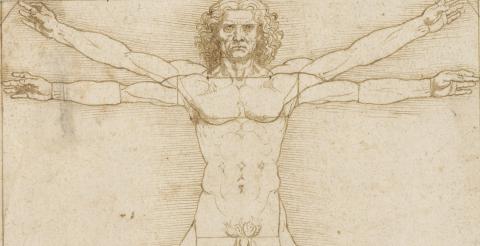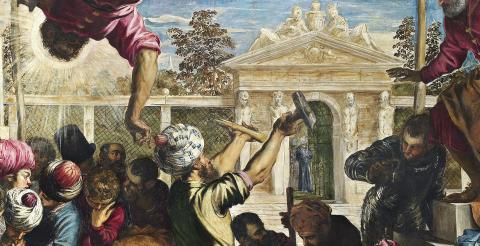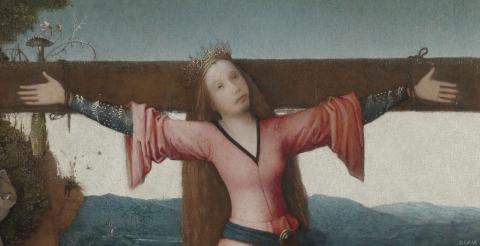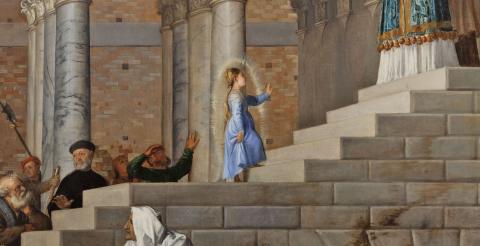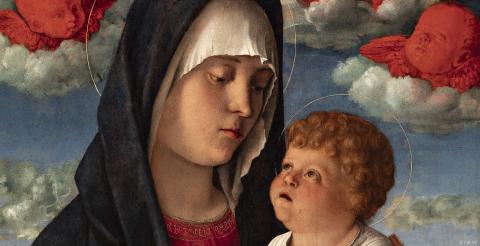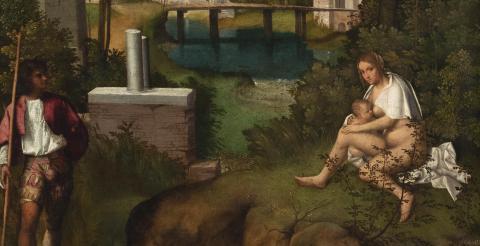Leonardo da Vinci
LEONARDO DA VINCI. THE HUMAN BEING AS A BLUE-PRINT FOR THE COSMOS
The Gallerie dell'Accademia celebrates the 500th anniversary of Leonardo da Vinci’s death (1519-2019) with an exhibition entitled Leonardo da Vinci. L’uomo modello del mondo, open to the public from 17 April to 14 July 2019. The museum’s collection includes 25 autograph sheets with manuscripts and drawings by Leonardo, offering a unique overview of his projects and documenting his scientific research on subjects spanning from the proportions of the human body to physics, optics, mechanics, and weapon design, as well as a few preparatory drawings for paintings such as the famous Battle of Anghiari and Virgin and Child with Saint Anne.
The most prominent drawing is certainly the Uomo Vitruviano, or Vitruvian Man, which has come to symbolise the classical perfection of body and mind, a human-scale microcosm mirroring the entire universe.
Through Leonardo’s drawings, as well as those by his pupils and followers, the exhibition retraces the key stages of the polymath’s life, starting from two early sketches on the theme of an adoration of the shepherds and encompassing the splendid Three Dancing Female Figures which was completed during his time in France; that is, the years prior to his death in Amboise on 2 May 1519.
A special section of the exhibition is dedicated to Leonardo’s studies on proportions and anatomy. This section focuses on the Vitruvian Man, displaying the work alongside extremely valuable sheets from Windsor as well as pages from the Codex Huygens, on special loan from the Morgan Library in New York City.
A striking journey through Leonardo’s life and work, the exhibition displays over 70 works, including 35 drawings by Leonardo himself.
Promoter:
Gallerie dell’Accademia di Venezia in a collaboration with Associazione Metamorfosi, Rome, Italy
Location:
Gallerie dell’Accademia di Venezia, Campo della Carità 1050, 30123 Venice, Italy
Dates:
17 April to 14 July 2019
Opening hours:
Monday: 8.15 a.m. to 2 p.m.
Tuesday to Sunday: 8.15 a.m. to 7.15 p.m.
Admission Information:
Tickets: €15.00 (€12.00 + €3.00 for the temporary exhibition)
Visitors aged 18–25: €3.50 (€2.00 + €1.50 for the temporary exhibition)
Information on concessionary rates and free admission
Curators:
Annalisa Perissa Torrini and Valeria Poletto
Exhibition Catalogue:
Annalisa Perissa Torrini
Press Office
Metamorfosi
Maria Grazia Filippi
T: +39 06 83 600 145/146
M: +39 333 207 5323
mariagraziafilippi@associazionemetamorfosi.com
CLP Relazioni Pubbliche
Clara Cervia | T: +39 02 3675 5700 | clara.cervia@clp1968.it | www.clp1968.it
facebook | instagram
@gallerieaccademiavenezia
This exhibition is part of the initiatives coordinated by the National Committee for the Celebrations of the 500th Anniversary of Leonardo da Vinci’s Death.
Explore the full calendar of events: www.leonardocinquecento.it
Discover all of the events on the occasion of the Leonardo da Vinci. L’uomo modello del mondo exhibition.
LABS FOR CHILDREN AND TEENAGERS
Press kit:
Cartella Stampa – Leonardo da Vinci. L'uomo modello del mondo.pdf
